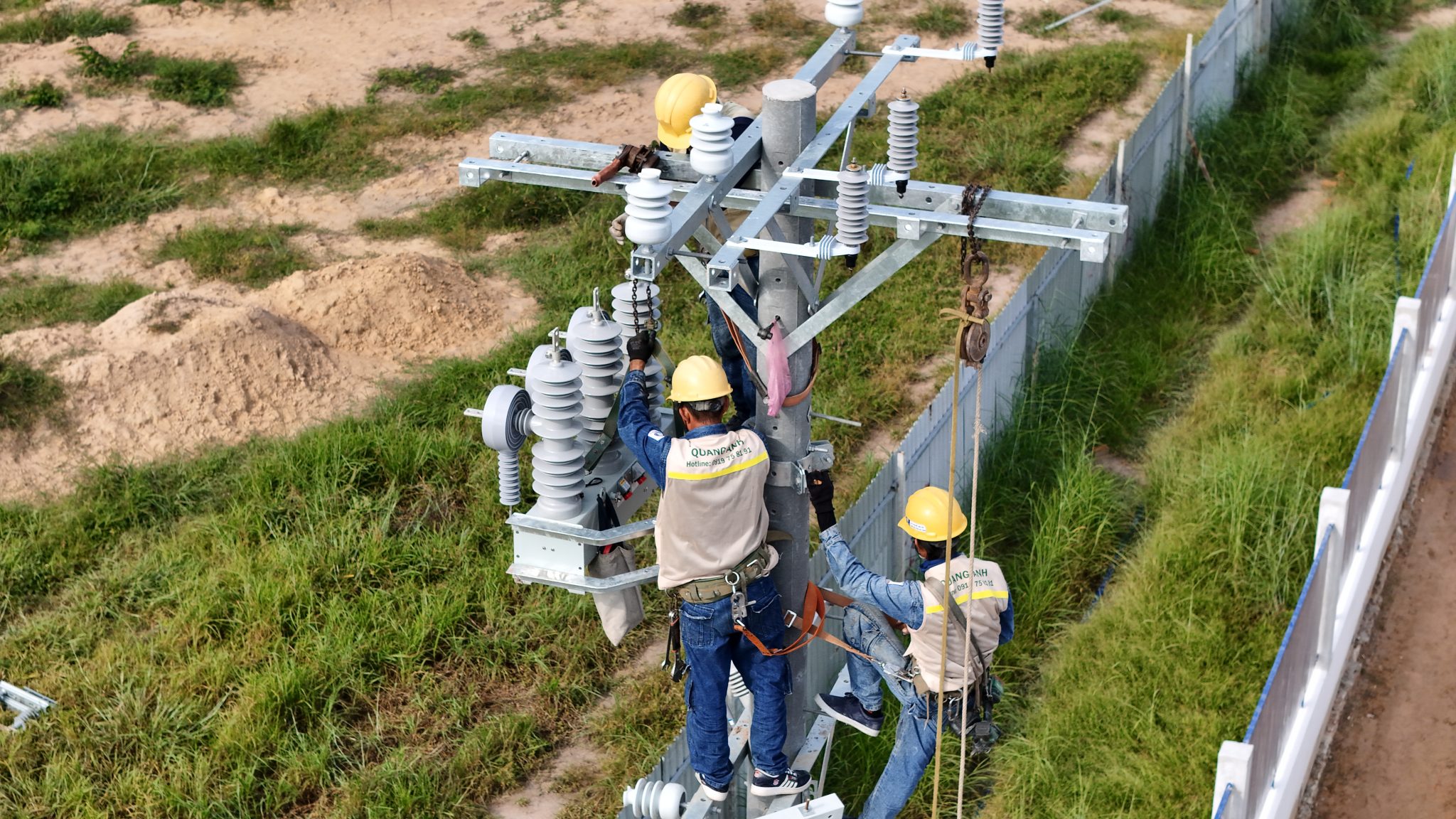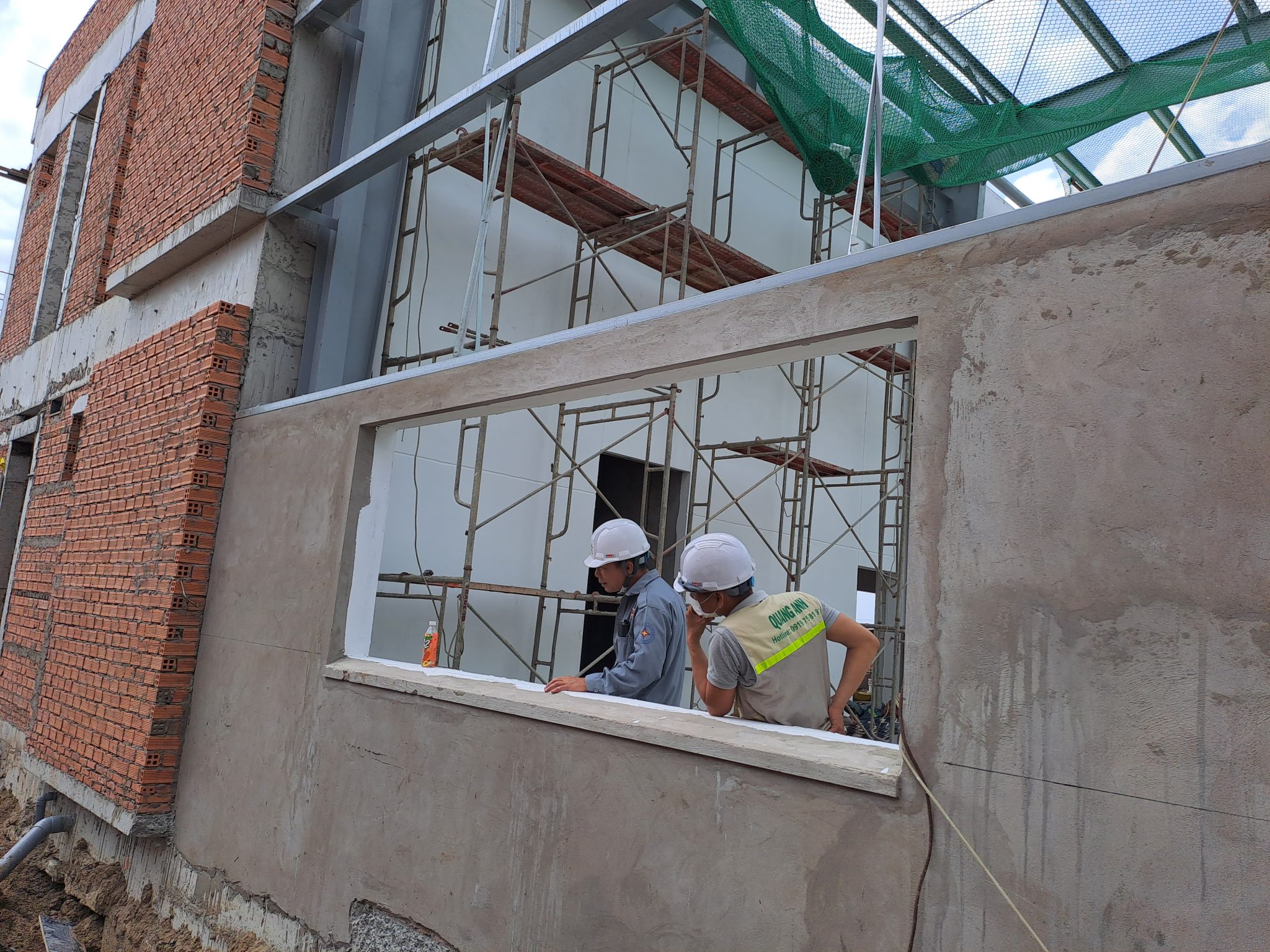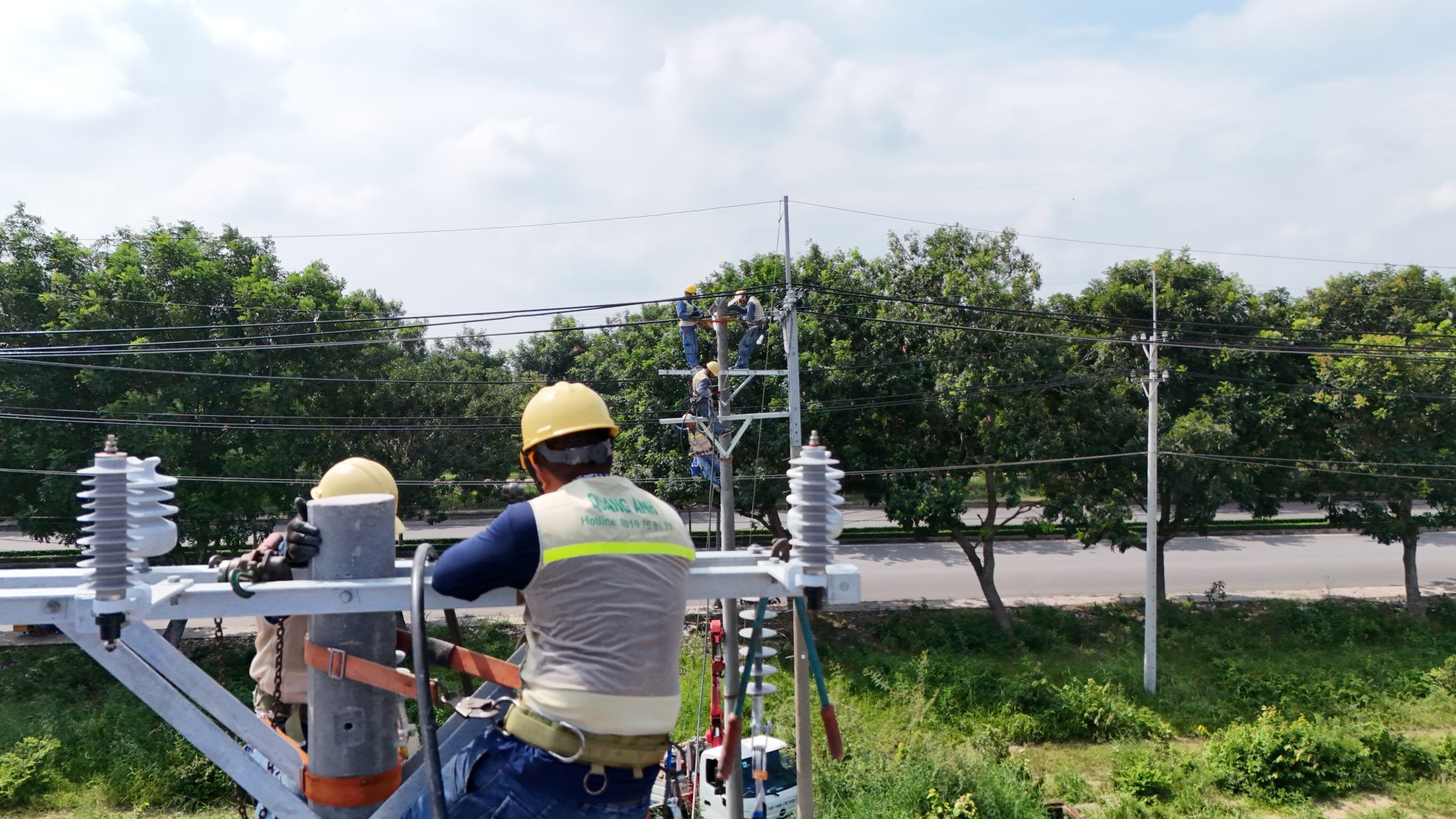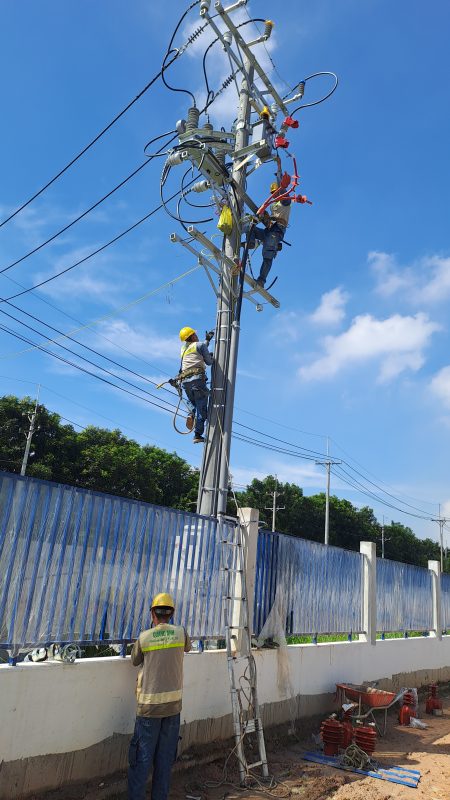Industrial electrical installation is a complex procedure requiring thorough preparation and meticulous execution to ensure both efficiency and safety, adhering to technical standards.
Overview of Industrial Electrical Installation
Incorporating the design, construction, and operation of electrical systems in industrial parks, every detail from drafting technical drawings to installation and inspection is prioritized for safety and effectiveness.
This process mandates a strict execution sequence to ensure both safety and efficiency. Here are the crucial steps involved in an industrial electrical installation project.
- Site Survey: The initial phase involves site surveys to gather data on space dimensions, workforce, machinery, industry type, and power demands.
- Design Drawing: The electrical system’s design must comply with stringent technical and electrical safety standards, ensuring accurate equipment placement, system configuration, and control circuits.
- Equipment Preparation: Essential equipment sourcing is a critical pre-installation step.
- Installation Execution: Installation adheres to approved designs, guaranteeing the system’s safe and efficient functioning.
- Testing and Inspection: Trial operation tests the system’s performance against power and safety standards prior to final acceptance and handover.
Key Considerations for Industrial Electrical Systems
- Power Consumption Estimation: Calculating the total power requirement guides suitable equipment selection.
- High Voltage Network Design: Careful planning of high-voltage lines, substation, and control panels is essential for efficient electricity distribution.
- Low Voltage Network Design: Ensures systems operate under 1kV voltage, with organized control panel installations.
- Lighting System Design: Determines necessary lighting fixtures to optimize costs and ensure production illumination.
Industrial Control Panels
Industrial control panels house interconnected electrical equipment via copper bars and wiring, managing power and safeguarding factory systems.
Safety and Efficiency
- Electrical Safety: Ensures compliance with all prescribed safety and technical standards.
- System Efficiency: Assures energy efficiency and high performance throughout operation.
Professionalism and strict adherence to procedures make industrial electrical installation both efficient and safe.

Detailed Process of Industrial Electrical Installation
The process begins with equipment preparation and site surveying, followed by designing the electrical blueprint, equipment installation, connectivity, and safety checks, culminating in a trial run to verify efficient system operation.
Adhering to detailed steps and technical guidelines is crucial for a successful installation.
Step 1: Equipment Preparation and Information Gathering
Ensure the availability of essential tools and materials for the industrial electrical installation, including both project materials and supporting tools. Collect comprehensive customer information and conduct site surveys for tailored system implementation.
Step 2: Survey and Design
Conduct precise data collection at the site for informed electrical design. Utilize these technical parameters to create a detailed blueprint, ensuring safe and efficient system functionality.
Step 3: Blueprint Approval
Submission and authorization of the blueprint by the business is crucial to validate all proposed methods before installation.
Step 4: Installation Execution
The process follows the approved blueprint, ensuring industrial electrical safety. All equipment, from power to control, must be securely installed according to the vetted design, with brands like Thibidi, EMC, and ABB recognized for durability and effectiveness.
Step 5: Testing and Inspection
A comprehensive system test evaluates practical operational capacity. Once all components meet performance and safety standards, the project is ready for full customer handover.
Installing Industrial Control Panels
The assembly process for industrial control panels requires precision from cutting cable trays to installing power and control equipment. Brands such as Schneider and Mitsubishi ensure quality and reliability.
Adhering precisely to the procedure ensures the installation of electrical systems with accuracy, efficiency, and safety, enhancing operational demands in manufacturing settings.

Guide to Installing Industrial Control Panels
Installing industrial control panels begins with cross-referencing schematics and materials, then mounting equipment, labeling, and completing technical connectivity checks.
This critical industrial process demands precision and advanced technical skills from comprehensive equipment preparation and detailed schematic interpretations, ensuring maximum efficiency and safety.
1. Preparation and Schematic Interpretation
- Equipment and Material Preparation: Ensure all necessary tools and materials are on hand, including reputable brands like Schneider, Mitsubishi.
- Schematic Analysis: Analyze technical drawings and cross-reference material lists to accurately assess the needed device specifications, preventing critical shortages or excess.
2. Control Panel Frame Installation
- Location Choice: Select installation spots that are dry and impact-free for stable, long-term industrial control panel performance.
- Frame Stabilization: Secure frames firmly to walls or floors, ensuring safety and aesthetics.
- Cable Trays and Rails: Efficiently arrange internal wiring for seamless future electrical connections.
3. Equipment Installation
- Cable Tray Setup: Cut and fit cable trays as specified, forming a base for mounting electrical devices.
- Power Component Installation: Secure components like circuit breakers and disconnects using bolts, with durable products from ABB or LS preferred.
- Control Component Installation: Mount control devices such as PLCs and sensors on quick-fit railings for easy operation and maintenance.
- Panel Door Components: Install indicator lights, switches, ensuring the overall system’s effective operation.
4. Electrical Device Connection
- Switchgear Setup: Organized installation per schematic ensures optimal power and electrical safety.
- Wire Connection: Robust connections between devices and main power following stringent quality like Cadivi standards.
- Load Connection: Ensure all industrial electrical devices perform their intended functions without complications.
5. Inspection and Completion
- System Inspection: Conduct comprehensive tests to confirm all components operate smoothly and error-free.
- Finalization and Certification: Ensure the panel’s electrical safety compliance for operational use, adhering to rigorous technical standards.
Important Considerations
- Safety: Always follow safety guidelines when handling industrial control panels to protect workers and equipment.
- Quality: Ensure the quality of devices and materials used from trusted manufacturers like Eaton, Schneider.
- Technical Standards: Strictly adhere to present electrical and technical standards to maximize system efficiency.

Industrial electrical installation offers significant benefits for manufacturing and industrial operations by ensuring efficient performance, cost savings, and safety. Proper adherence to processes enhances productivity and stability of business energy systems.
Contact QuangAnhcons now at Hotline: +84 9 1975 8191 for detailed advice on industrial electrical installation for your project.
QuangAnhcons specializes in providing comprehensive industrial electrical installation services with standard and safe procedures, from design to test operation, ensuring business efficiency.


Related Posts
Factory Electrical Systems: Comprehensive Design and Implementation Guide
Discover the detailed and safe process of factory electrical systems design and implementation. [...]
Oct
Blueprints Required for Factory Construction Permits
Discover the necessary blueprints in factory construction permit applications, from floor plans to electrical and [...]
Oct
What Are the Requirements for a Factory Construction Permit? A Comprehensive Guide
Explore the documentation and steps needed to secure a factory construction permit for streamlined project [...]
Oct
Factory Construction Permit Procedures in Vietnam: Essential Guidelines and Documents
Learn the procedures for securing a factory construction permit in Vietnam, focusing on document preparation [...]
Oct
Key Steps in the Factory Construction Process
Discover the essential steps and requirements for building factories. [...]
Oct
Comprehensive Electrical Substation Solutions by Quanganhcons
Discover the cutting-edge electrical substation solutions offered by Quanganhcons for industrial applications. [...]
Oct
Investment Costs for a 1MWp Solar Power System and Influencing Factors
Explore the investment costs for a 1MWp solar power system in Vietnam and the influencing [...]
Sep
QuangAnhcons: Elevating Wind Energy Solutions
Explore QuangAnhcons' leadership in wind energy and renewable solutions in Vietnam. [...]
Sep
Electrical Contractor Strategies at Becamex Industrial Park
Discover the strategic advancements and partnerships of the electrical contractor at Becamex Industrial Park. [...]
Sep
Investment Insights for 1MW Wind Energy in Vietnam: Costs and Opportunities
Discover the detailed analysis of costs and opportunities for investing in 1MW wind energy projects [...]
Sep
Advanced Electrical Installation Solutions by QuangAnhcons
Explore advanced electrical installation solutions and modern technology with QuangAnhcons. [...]
Sep
Enhancing Industrial Electrical Services with Quanganhcons
Discover Quanganhcons' expertise in industrial electrical services, offering efficient and sustainable power systems. [...]
Sep
Comprehensive MEP Solutions by QuangAnhcons: From Design to Maintenance Excellence
Discover optimal MEP solutions with QuangAnhcons, dedicated to excellence from design through maintenance. [...]
Sep
Comprehensive Electromechanical Contracting Solutions by QuangAnhcons
Explore QuangAnhcons' comprehensive services for efficient and safe energy system solutions. [...]
Sep
QuangAnhcons: Empowering Industrial Energy Solutions
Discover how QuangAnhcons delivers optimal industrial EPC solutions. [...]
Sep
Effective Industrial Construction Management and Execution
Optimize your industrial projects from design to execution with our contractor services. [...]
Sep
QuangAnhcons: Pioneers in M&E and Renewable Energy Solutions
Discover QuangAnhcons' innovative M&E services and renewable energy solutions. [...]
Sep
QuangAnhcons: Expertise and Outstanding Services in the Electrical Sector
Discover the unmatched expertise and services of QuangAnhcons, setting superior standards in the electrical contracting [...]
Sep
QuangAnhcons: Innovation and Precision in Industrial Electrical Contracting
Discover QuangAnhcons, a top contractor offering superior electro-mechanical solutions. [...]
Aug
Expert Solutions for 2x2500kVA Substation Projects with QuangAnhCons
Explore QuangAnhCons, a forefront entity in designing and constructing large industrial substations. [...]
Aug